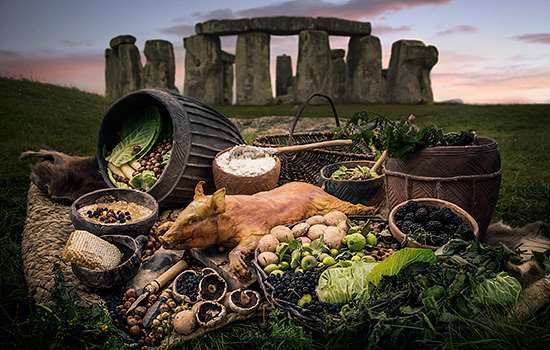UNLIMITED ACCESS TO OVER 400 HISTORIC PLACES
Live and breathe the story of England at royal castles, historic gardens, forts & defences, world-famous prehistoric sites and many others.
Can you tell a henge from a hillfort? What was a stone circle used for? What’s the difference between a long barrow and a round barrow?
Watch this short animation to discover the answers to these and many other questions about England’s prehistoric monuments, and find out how and why they developed from the Neolithic period through the Bronze Age to the Iron Age.

Learn about the different types of monument and the extraordinary feats of engineering needed to create them.

What can we learn about what prehistoric people believed from the monuments and artefacts they created?

How did Neolithic people build Stonehenge using only the simple tools and technologies available to them?
Follow these links to discover the history of just a few of the prehistoric sites looked after by English Heritage.

Grime’s Graves is one of only ten known prehistoric flint mines in England, where from about 4,500 years ago miners dug over 400 pits.

Learn about the history of this iconic monument, from its origins as an early henge about 5,000 years ago to the present day.

Built and altered over many centuries, Avebury is one of the largest and the most complex of Britain's surviving Neolithic henge monuments.

The largest and most complex hillfort in Britain, Maiden Castle was home to several hundred people in the Iron Age (800 BC–AD 43).

A fine example of an Iron Age hillfort with multiple ramparts, Old Oswestry is one of a dense band of hillforts in eastern Wales and the Marches.

Uniquely, both a medieval royal castle and a cathedral were built within this vast Iron Age hillfort, which later lived on as a notorious ‘rotten borough’.

This Iron Age settlement probably has its origins about 2,500 years ago and is one of the finest surviving ancient villages in the country.

This well-preserved Iron Age village has an underground passage known as a fogou, a mysterious type of monument only found in west Cornwall.
English Heritage looks after nearly 60 prehistoric sites across England, from world famous Stonehenge and Avebury to isolated standing stones and mysterious fogous. Search our list and map of sites and plan your visit.
Find prehistoric sites to visitDiscover how archaeology has led to new, and sometimes surprising, interpretations of prehistoric life.

What do finds at these prehistoric flint mines reveal about the significance of mining, and the value of flint, to Neolithic communities?

Find out what the people who built and used Stonehenge ate, how they cooked and served their food, and the cutting-edge science behind these discoveries.

Britain’s largest Iron Age hillfort was once regarded as a monument to the brutality of Roman invasion. But was the story actually more complicated than that?